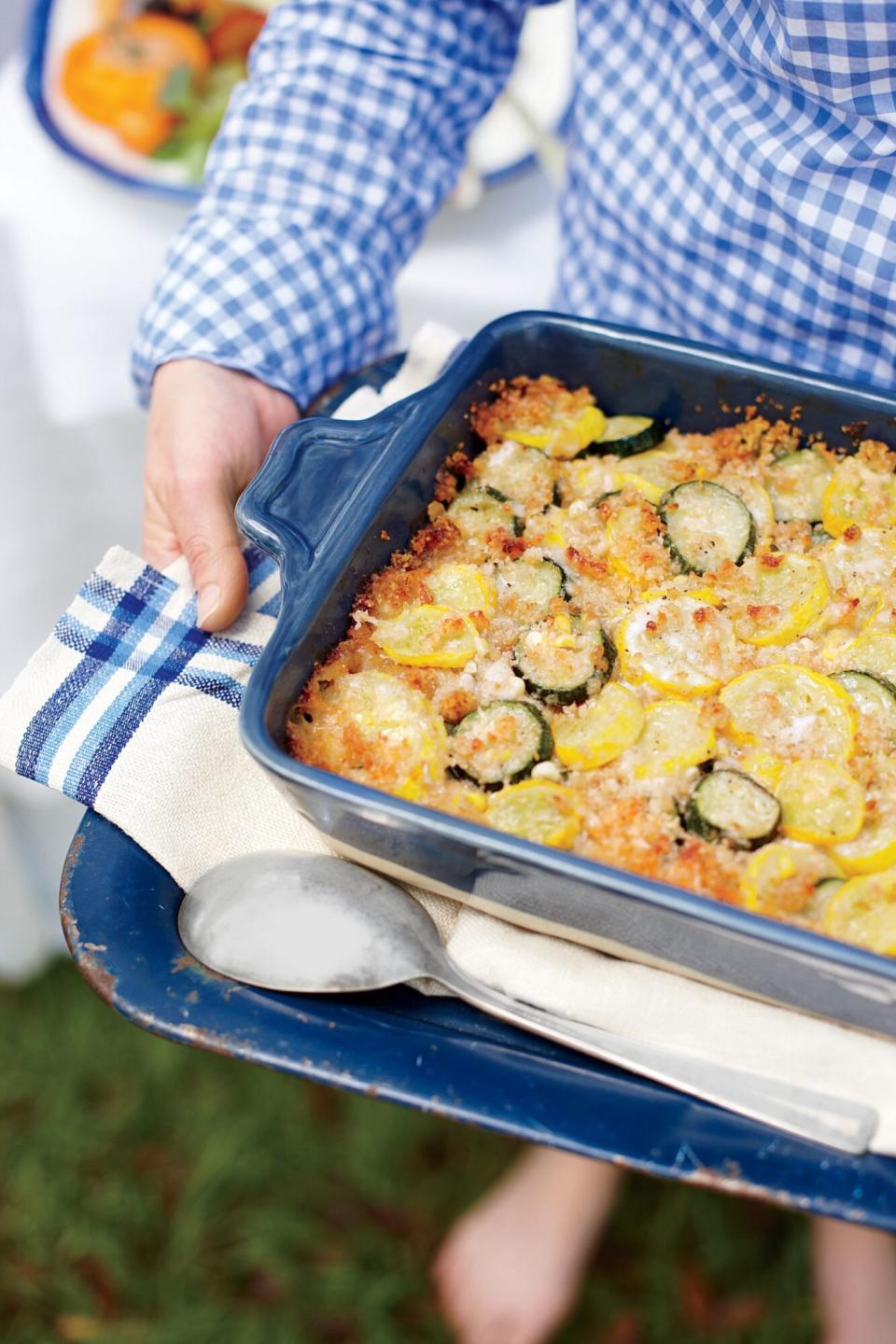Can You Freeze Zucchini?
If you can’t bear the sight of another pile of zoodles, or you’ve baked enough loaves of zucchini bread to stock a bakery, or you’re considering making a squash smoothie, that’s a sign that you probably have too much zucchini on your hands. Don’t despair. Your surplus of squash doesn’t have to go to waste. Zucchini and summer squash can be frozen with great results, if done properly (ie: not just tossed into a ziplock bag). Here’s how to do it the right way:
1. Cut
Whether you dice the squash or cut it into rounds or half moons, make sure all of the pieces are roughly the same size. Don't spiralize zucchini to freeze—the curly strands will turn mushy when defrosted and cooked.
2. Blanch
Bring a stockpot of unsalted water to a boil, then add the squash. Cook the squash for about 1 minute, then drain the squash into a colander. Place the squash under cold running water to stop the cooking process. (Blanching improves the texture of the zucchini when it is defrosted and cooked.)

Hector Sanchez
3. Flash Freeze
Line a baking sheet (that’s small enough to fit in your freezer) with a layer of aluminum foil or parchment paper. Spread the hot cooked zucchini out over the foil so the pieces do not touch. Once the zucchini has cooled, place the baking sheet in the freezer for 30 minutes, or until the zucchini pieces have frozen solid.
4. Store
Remove the baking sheet from the freezer and transfer the frozen zucchini pieces from baking sheet to a ziplock freezer bag or airtight container. Store in the freezer and use within three to four months for the best flavor and texture.
When you’re ready to eat the frozen zucchini, you don’t even have to defrost it. Simply toss the squash pieces into boiling water, saute them in a hot skillet, or roast them in the oven until they are tender, hot, and cooked through.

